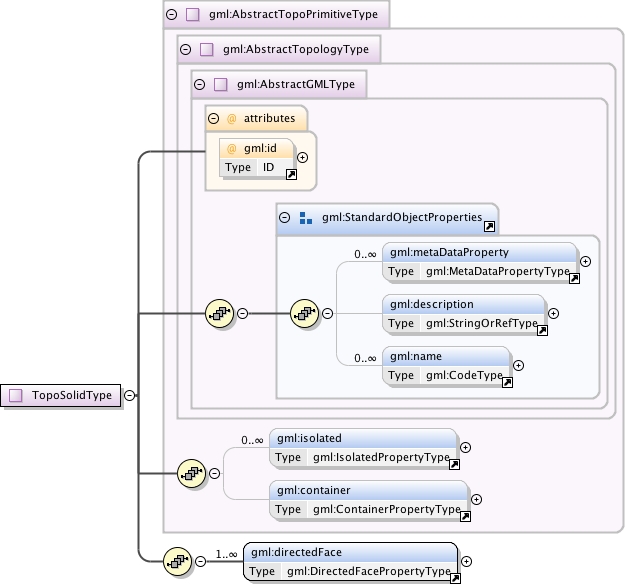| Namespace | http://www.opengis.net/gml | |||||||||||||
|
Annotations
|
|
|||||||||||||
|
Diagram
|
 |
|||||||||||||
| Type | extension of gml:AbstractTopoPrimitiveType | |||||||||||||
| Type hierarchy | ||||||||||||||
|
Used by
|
|
|||||||||||||
| Model | gml:metaDataProperty* , gml:description{0,1} , gml:name* , gml:isolated* , gml:container{0,1} , gml:directedFace+ | |||||||||||||
| Children | gml:container, gml:description, gml:directedFace, gml:isolated, gml:metaDataProperty, gml:name | |||||||||||||
|
Attributes
|
|
|||||||||||||
|
Source
|
|
|||||||||||||
| Schema location | http://schemas.opengis.net/gml/3.1.1/base/topology.xsd |